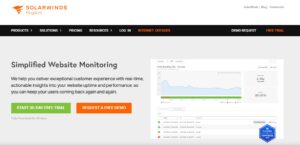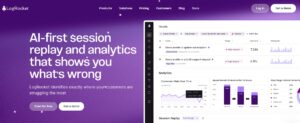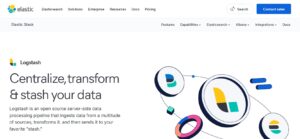Zipkin, the open-source tracing tool from Twitter, has over 17,000 GitHub stars and is widely used in custom observability stacks. While it supports OpenTelemetry and basic trace visualization, it lacks MELT support, smart sampling, and alerting. As teams scale, these gaps—along with limited compliance and deployment options—become major blockers.
CubeAPM is the best alternative to Zikin. It offers full-stack observability—including logs, metrics, traces, RUM, and synthetics—at a flat $0.15/GB with no host or user-based pricing. It supports smart sampling, 800+ integrations, zero egress costs, and allows self-hosted deployment for full compliance and data control. With native OpenTelemetry support and real-time incident workflows, CubeAPM is built for modern teams scaling beyond basic tracing.
In this article, we’ll explore the top 7 Zipkin alternatives—including CubeAPM, Datadog, New Relic, Dynatrace, Coralogix, Sentry, and Elastic Observability—comparing their capabilities, pricing, deployment models, and OpenTelemetry readiness.
Table of Contents
ToggleAPM Tools Comparison
| Tool | Telemetry Support (OTEL) | Deployment (Self-host, Setup) | Pricing | Sampling Strategy |
|---|---|---|---|---|
| CubeAPM | ✅ | Self-hosted, setup <1 hr | Ingestion-based pricing of $0.15/GB | Smart Sampling |
| Dynatrace | Limited OTEL | Partial on-prem | $0.08/hour per 8 GiB host (~$57.60/host/month) | Davis AI |
| New Relic | Limited OTEL | Cloud-only, | Free tier: Ingestion based pricing of $0.35/GB + $400/user/month for full access | Head-based |
| Datadog | Limited OTEL | Cloud-only, setup in 1–2 hours | APM: starts at $31/host/month; logs - $0.1/GB + $1.7/M events (15d) | Head-based |
| Splunk AppDynamics | No | Enterprise on-prem | Starts $6/host/month, billed annually | Basic agent-level sampling only |
| Middleware | ✅ | Cloud & on-prem deployment | Free: upto 100GB data, unlimited users, 14-day retention Pay as you go: $0.3 GB of metrics, logs, traces; 30-day retention Custom pricing | No built-in trace sampling |
| Grafana | ✅ | OSS self-hosted; Grafana Cloud optional | Free:✅,14 days retention; Pro: $19 / month + usage, 8X5 email support 13 months retention for metrics; 30 days retention for logs; Enterprise: $25,000 / year , Premium support, Custom retention | Sampling requires custom OTEL processor |
Top 7 Zipkin Alternatives
- CubeAPM
- Dynatrace
- New Relic
- Datadog
- Splunk AppDynamics
- Middleware
- Grafana
Why Look for Zipkin Alternatives?
Engineering teams and DevOps leaders are increasingly migrating from Zipkin due to the following reasons:
1. Limited MELT Coverage
Zipkin focuses solely on distributed traces. There’s no built-in support for logs, metrics, real user monitoring (RUM), or synthetic checks—forcing teams to bolt on multiple third-party tools to achieve complete observability.
2. No Smart Sampling
Unlike modern tools that offer latency-aware or anomaly-driven sampling strategies (e.g., CubeAPM’s Smart Sampling), Zipkin relies on upstream agents to perform simplistic head-based sampling, often missing valuable anomalies in production workloads.
3. No Built-In Alerting or Incident Workflows
Observability isn’t just visibility—it’s response. Zipkin lacks alerting, error aggregation, deduplication, or on-call routing features, limiting its use in real-world incident management pipelines.
4. Community Support Only, No SLAs
Zipkin is supported primarily via GitHub and Gitter. For teams running mission-critical infrastructure, the absence of official support or commercial SLAs adds operational risk.
5. UI and Integration Friction
Zipkin’s UI is minimal and outdated compared to modern observability platforms. Integration with cloud-native services (AWS Lambda, Kubernetes, etc.) is either manual or unavailable out of the box.
Criteria for Suggesting Zipkin Alternatives
When recommending alternatives to Zipkin, we evaluated tools across the following seven criteria:
1. OpenTelemetry-Native Instrumentation
Tools that natively support and ingest OpenTelemetry traces, metrics, and logs without requiring proprietary agents or vendor lock-in.
2. Smart Sampling & Cost Efficiency
Support for dynamic sampling strategies (e.g., anomaly detection, latency-aware tail sampling) that help retain high-value traces while controlling storage costs.
3. Full MELT Observability
In addition to traces, the tool should support metrics, logs, events, errors, and user/session data to provide unified observability from backend to frontend.
4. Self-Hosting & Data Residency Control
Options for on-premises or customer-cloud deployment to meet compliance, latency, or data sovereignty requirements. Air-gapped support is a bonus.
5. Transparent & Scalable Pricing
Simple and predictable billing—especially for startups or mid-sized teams ingesting high volumes of telemetry (e.g., 10TB/month). Tools with opaque per-host or per-user billing structures are deprioritized.
6. Incident Response & Alerting Integration
Built-in alert pipelines, error inboxes, SLO-based alerting, and integrations with on-call tools (PagerDuty, Opsgenie) to enable production-ready workflows.
7. UI/UX & Developer Experience
Modern, easy-to-use dashboards, rich querying (e.g., for logs and traces), high cardinality handling, and a smooth onboarding process.
Zipkin Overview
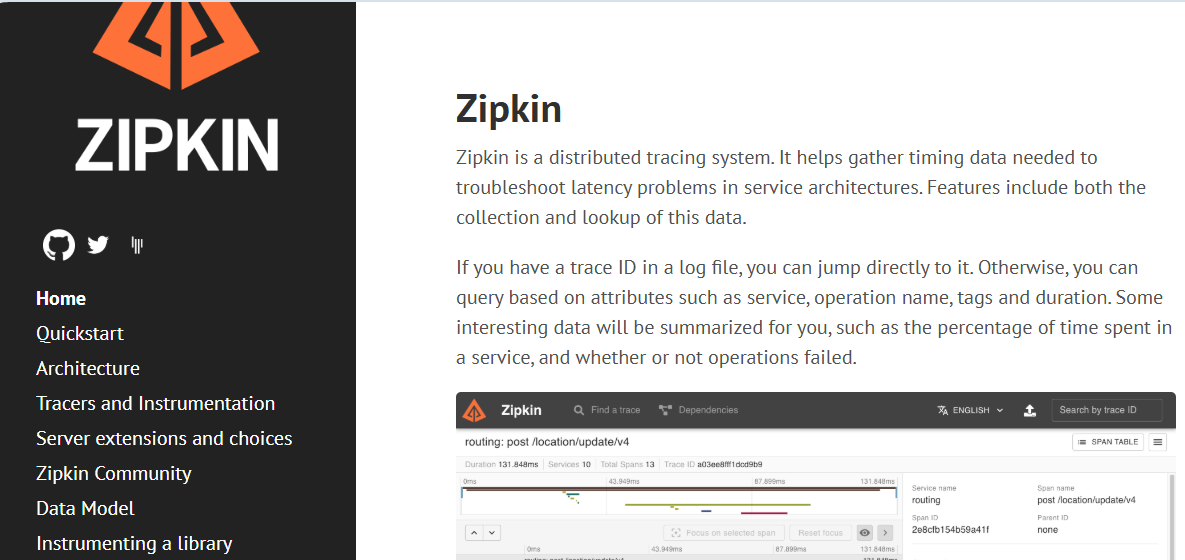
Known for:
Lightweight, open-source distributed tracing system used to track request flows across microservices and identify latency bottlenecks in backend systems.
Standout Features:
- Simplicity and minimal setup overhead
- Support for multiple backends (MySQL, Elasticsearch, Cassandra, in-memory)
- Compatible with OpenTelemetry span ingestion
- Widely adopted in research, academic, and DIY tracing environments
Key Features:
- Distributed tracing with basic search and dependency mapping
- OpenTelemetry and Brave instrumentation support
- Pluggable storage and transport layers
- Self-hosting with simple deployment (Docker, JAR, source)
- Web UI for trace visualization
Pros:
- Free and open-source under the Apache 2.0 license
- Low resource overhead and fast to deploy
- Flexible storage and transport integrations
- Good for educational use and lightweight deployments
Cons:
- No support for metrics, logs, or full MELT observability
- No smart or tail-based sampling—relies on head-based upstream sampling
- Lacks alerting, error tracking, and incident workflows
- No built-in RBAC, SSO, or compliance tooling
- Outdated UI and minimal dashboarding features
- Community support only (no official SLA or enterprise support)
Best for:
Small teams, side projects, or research environments that only need basic tracing without complex compliance, alerting, or full-stack observability requirements.
Pricing & Customer Reviews:
- Pricing: Free and open-source with no licensing fees. However, hidden costs arise in maintaining infrastructure, storage, and custom integrations.
- Rating: 4.8/5 rating on G2. While praised for ease of deployment and simplicity, reviews often mention its limited functionality and lack of native integrations compared to modern observability platforms.
Top 7 Zipkin Alternatives
1. CubeAPM
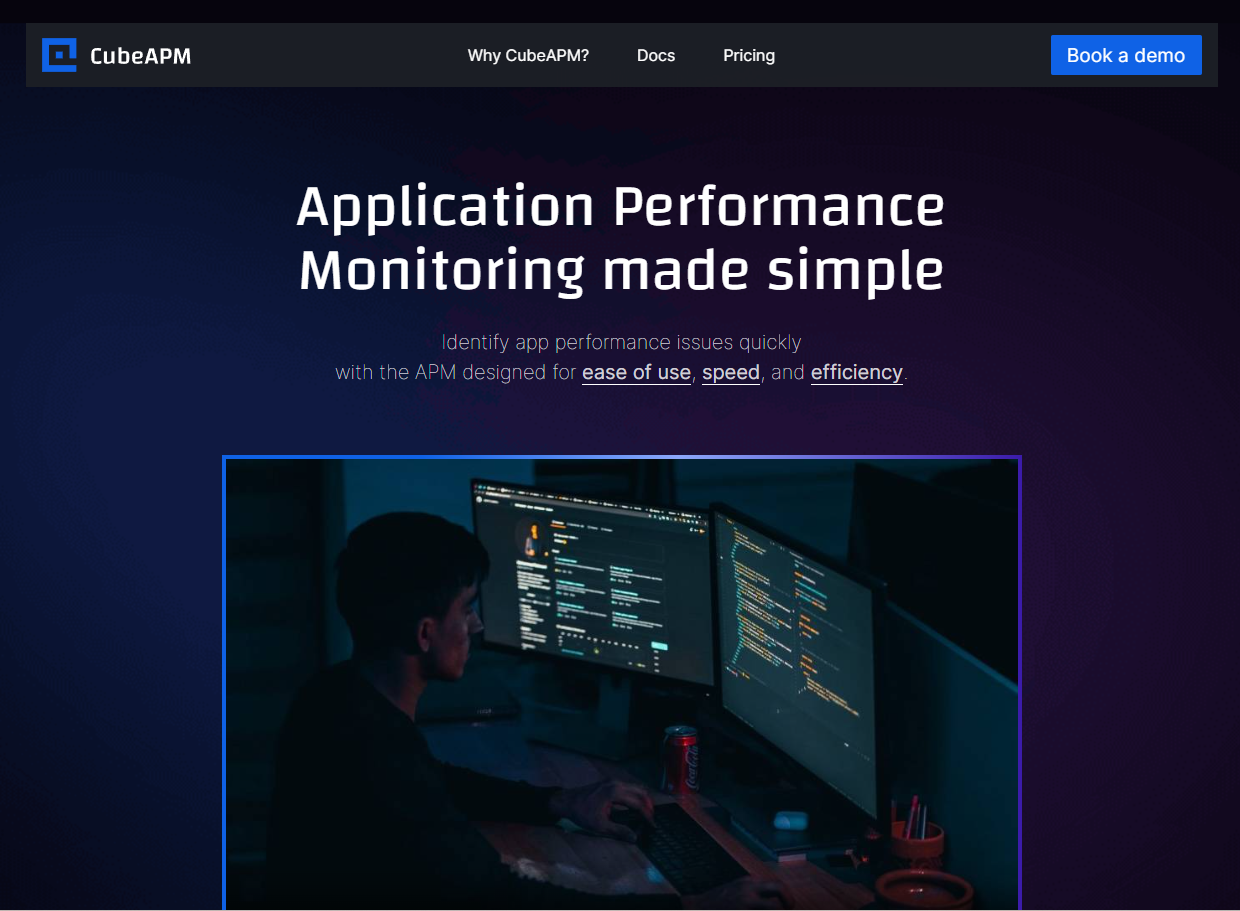
Known for:
End-to-end OpenTelemetry-native observability platform offering full MELT (Metrics, Events, Logs, Traces) visibility with cost-efficient smart sampling and flexible deployment.
Key Features:
Smart Sampling for Trace Optimization
CubeAPM’s adaptive sampling retains high-value traces (e.g., slow transactions or error anomalies) while discarding noise—reducing storage by up to 70% without losing insight.
Full MELT Stack Support
It supports distributed tracing, infrastructure metrics, logs, real user monitoring (RUM), synthetic checks, and error tracking—all in one unified platform.
Compliance-Friendly Self-Hosting
CubeAPM allows organizations to deploy the platform within their own cloud or on-prem, making it ideal for teams needing data localization, low-latency, or air-gapped environments.
High Compatibility
Fully compatible with OpenTelemetry, Prometheus, Datadog, New Relic, and Elastic agents, simplifying migration.
Real-Time Alerting & Collaboration
Offers error inboxes, Slack/WhatsApp integration, and SLO-based alerting—features missing from Zipkin.
Standout Features:
- Flat pricing at $0.15/GB with no host-based or per-user charges
- Native smart sampling engine
- 60%+ cost savings over Datadog and New Relic
- Extensive integration ecosystem, 80+ integrations
- Self-hosted and SaaS-ready
- Built-in RUM, logs, traces, and synthetics
Pros:
- Predictable pricing and high telemetry volume support
- Native OpenTelemetry ingestion
- Lightning-fast trace search and retention at scale
- Friendly support (minute-level TAT via Slack/WhatsApp)
- Ideal for both startups and compliance-heavy enterprises
- No extra egress costs
Cons:
- Not suited for teams looking for off-prem solutions
- Strictly an observability platform and does not support cloud security management
Best for:
Teams migrating off open-source tools like Zipkin or Jaeger, and enterprises needing affordable, full-stack observability with data control.
Pricing & Customer Reviews:
- Pricing: $0.15/GB for ingestion
- Rating: 4.8/5 (Based on feedback received from end-users on Slack)
CubeAPM vs Zipkin:
While Zipkin provides basic distributed tracing, CubeAPM delivers full MELT observability with real-time alerting, advanced sampling, and compliance-ready hosting. CubeAPM is ideal for production environments where Zipkin falls short due to limited telemetry, lack of incident response features, and no support for logs, RUM, or synthetics.
2. Dynatrace
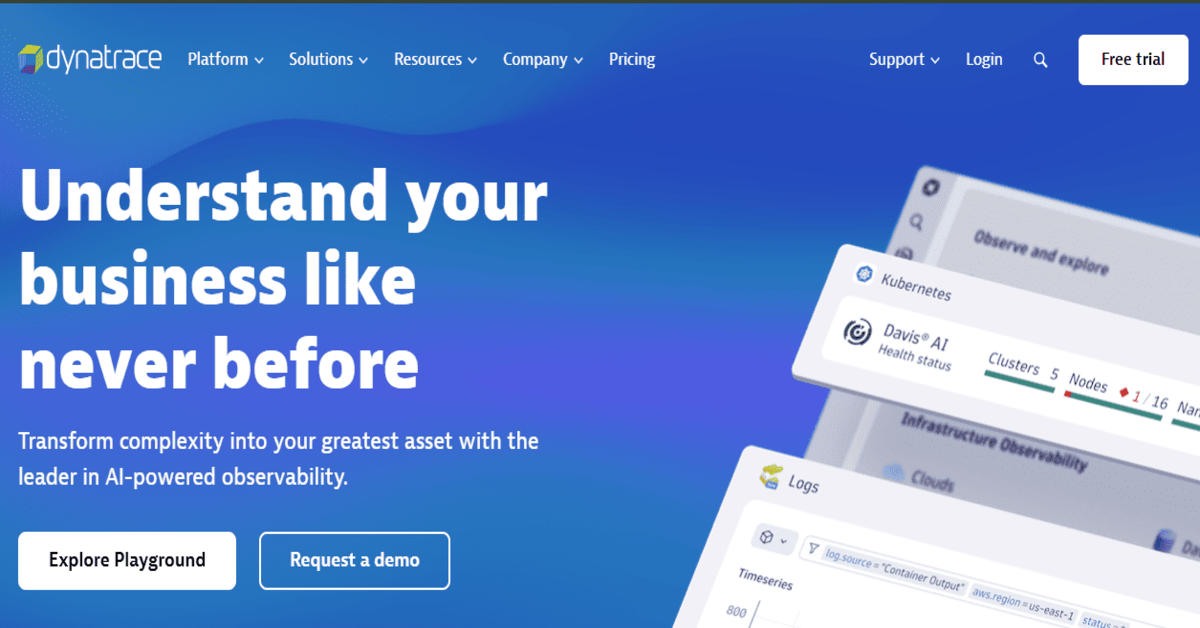
Known for:
Dynatrace is an AI-powered observability platform with strong automation capabilities across infrastructure, APM, logs, security, and user experience.
Key Features:
Davis AI Engine
Dynatrace’s proprietary AI engine (Davis) automates root cause analysis, anomaly detection, and dependency mapping across complex distributed systems.
Full-Stack Observability
Provides deep telemetry from apps, infrastructure, containers, networks, logs, and real user sessions—all with automatic instrumentation.
Code-Level Insights
Offers method-level tracing with PurePath technology, providing high granularity in transaction monitoring and service calls.
Built-in Security Monitoring
Integrates application security analytics, vulnerability scanning, and runtime threat detection.
Standout Features:
- Davis AI engine for auto-remediation and smart alerting
- PurePath for method-level tracing
- Deep Kubernetes and cloud-native integrations
- Strong enterprise-grade SLA and compliance
Pros:
- Highly automated deployment and instrumentation
- AI-powered problem resolution
- Unified platform covering security and observability
- Rich dashboards and customizable analytics
Cons:
- Expensive for large-scale telemetry ingestion
- Limited support for OpenTelemetry-native workflows
- Steeper learning curve for non-enterprise users
- Heavily tied to proprietary agents
Best for:
Large enterprises with complex microservices environments looking for AI-assisted automation and built-in security with full-stack observability.
Pricing & Customer Reviews:
- Pricing:$0.08/hour per 8 GiB host (~$57.60/host/month)
- Rating: 4.4/5 (G2)
Dynatrace vs Zipkin:
Unlike Zipkin, which focuses solely on distributed tracing, Dynatrace delivers AI-powered, full-stack observability with automation, security insights, and application topology mapping. However, it comes at a significantly higher cost and lacks OpenTelemetry-native flexibility.
New Relic

Known for:
New Relic is a nified observability platform offering APM, infrastructure monitoring, RUM, logs, and dashboards in a single interface.
Key Features:
All-in-One Telemetry
Supports ingestion and visualization of logs, metrics, traces, and events within a unified Telemetry Data Platform (TDP).
NerdGraph & Nerdpacks
Custom visualizations and automation via GraphQL APIs and modular apps, tailored to engineering workflows.
Automatic Instrumentation
New Relic agents auto-instrument popular languages and frameworks, though some rely on proprietary formats.
Standout Features:
- Unlimited user seats included in plans
- 100 GB free telemetry ingestion per month
- Interactive trace UI and service maps
- Dashboards with 300+ prebuilt integrations
Pros:
- Powerful UI and query capabilities (NRQL)
- Broad telemetry coverage in one place
- Generous free tier for small teams
Cons:
- Charges increase rapidly after crossing ingestion thresholds
- Retention and alerting features limited in lower tiers
- Limited support for tail-based or smart sampling
- Compliance issues for data localization (data stored outside India by default)
Best for:
Startups or mid-size companies looking for a broad observability suite with generous free tiers and ready-made dashboards.
Pricing & Customer Reviews:
- Free tier available: 100 GB/month of data ingest included.
- Pricing: $0.35/GB for telemetry; $400/user/month for enterprise support
- Rating: 4.4/5 (G2)
New Relic vs Zipkin:
While Zipkin provides basic open-source tracing, New Relic offers broader MELT observability and powerful dashboards—but at higher long-term costs and limited sampling efficiency. It’s better suited for teams needing turnkey observability out of the box.
3. Datadog

Known for:
Datadog is a comprehensive cloud-native observability suite covering infrastructure, APM, logs, synthetics, and security.
Key Features:
Modular MELT Coverage
APM, logs, infrastructure, RUM, synthetics, and SIEM available in separate modules—each billed independently.
Auto Instrumentation & Integrations
900+ native integrations with cloud providers, databases, and orchestration tools (Kubernetes, ECS, etc.).
Dashboards & Watchdog
AI-based alerting and Watchdog assistant for auto-detecting anomalies.
Standout Features:
- Broadest integrations library in the market
- Powerful UI and customizable dashboards
- CI visibility, session replay, and mobile RUM
- Feature-rich and fast-growing ecosystem
Pros:
- End-to-end visibility with enterprise reliability
- Strong community and documentation
- Flexible modular features
Cons:
- Infamously complex and opaque pricing
- Charges for hosts, ingested data, indexed events, synthetic runs, etc.
- Users report surprise overages (e.g., $30K spike due to one metric)
- Data localization and compliance concerns
- High total cost for 10TB+ ingestion
Best for:
Engineering-heavy organizations with budget flexibility that want a wide feature set and deep integrations.
Pricing & Customer Reviews:
- Pricing: APM ~$31/host/month; logs ~$0.1/GB + $1.7/M events
- Rating: 4.4/5 (G2)
Datadog vs Zipkin:
Datadog far exceeds Zipkin in telemetry breadth and enterprise capabilities but comes with unpredictable costs and vendor lock-in. Zipkin remains simpler but lacks the observability depth needed at scale.
4. Splunk AppDynamics

Known for:
Splunk AppDynamics Enterprise-grade APM solution (now under Cisco) focused on business transaction monitoring, application performance diagnostics, and root cause analysis.
Key Features:
Business Transaction Monitoring
AppDynamics maps business-critical transactions and correlates them with backend service performance and database calls.
Code-Level Diagnostics
Provides method-level trace visibility, database query insights, and real-time application dependency mapping.
AI-Powered Anomaly Detection
Automatically flags baseline violations and correlates issues across infrastructure, applications, and end-user performance.
Standout Features:
- Application maps with flow diagrams
- Baseline performance learning
- Integrated with Cisco network and security stack
- Enterprise-focused SLA and compliance
Pros:
- Deep diagnostics for Java, .NET, and enterprise stacks
- Strong NOC-friendly dashboards
- Focus on aligning performance with business KPIs
Cons:
- UI and configuration are complex and often require training
- Not built for OpenTelemetry-native ingestion
- Limited flexibility in self-hosted or cloud-agnostic environments
- Expensive at scale
Best for:
Enterprises that want detailed business transaction mapping and are already part of the Cisco ecosystem.
Pricing & Customer Reviews:
- Pricing: Enterprise license model; APM starts $6/month-$50/host/month, billed annually
- Rating: 4.3/5 (G2)
AppDynamics vs Zipkin:
While Zipkin offers simple, free tracing, AppDynamics delivers in-depth diagnostics and business correlation—at the cost of vendor lock-in and high pricing. It’s a better fit for large organizations with legacy tech stacks.
5. Middleware
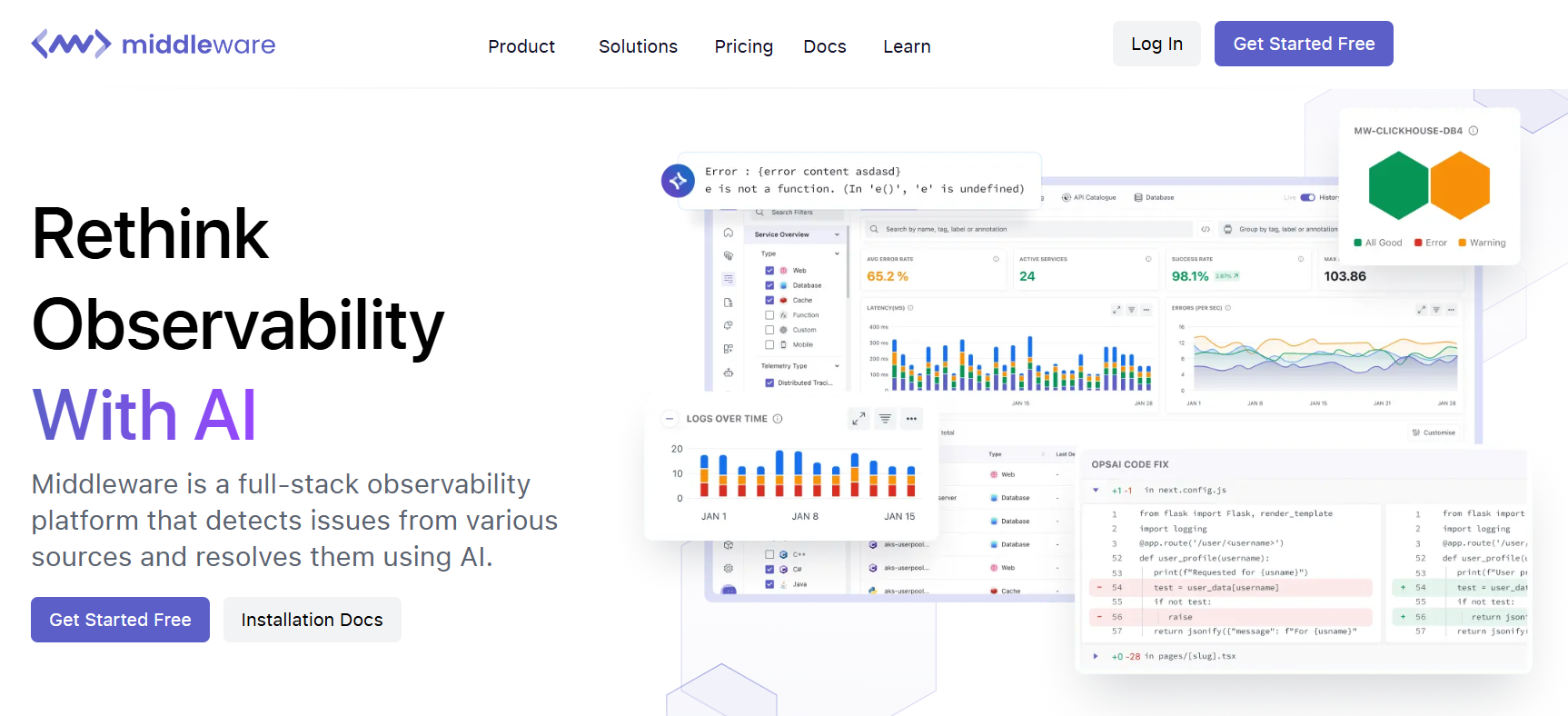
Known for:
Middleware is an open-source, cloud-native observability platform focused on cost-effective full-stack monitoring for modern applications.
Key Features:
Modular Observability Suite
Covers metrics, logs, traces, synthetics, and uptime monitoring with native OpenTelemetry support.
Transparent Pricing Model
Flat pricing per telemetry type, ideal for startups and scaling teams—significantly cheaper than Datadog.
Easy Setup and Agentless Integrations
Auto-discovery, Prometheus compatibility, and fast onboarding make Middleware appealing for developer teams.
Standout Features:
- OpenTelemetry-native from the ground up
- Affordable and transparent pricing
- Error tracking and synthetic checks built-in
- Self-hosted and managed deployment options
Pros:
- Predictable billing for high-ingestion workloads
- Open-source flexibility
- Fast trace and metric search
Cons:
- Smaller ecosystem and brand recognition
- UI still maturing in comparison to incumbents
- Limited enterprise compliance documentation
Best for:
Teams outgrowing Zipkin and seeking an open-source observability stack with predictable cost and broader feature coverage.
Pricing & Customer Reviews:
- Pricing:
- Free: upto 100GB data, unlimited users, 14-day retention
- Pay as you go: $0.3 GB of metrics, logs, traces; 30-day retention
- Custom pricing for scaling
- Rating: 4.7/5 (G2)
Middleware vs Zipkin:
Middleware expands beyond Zipkin’s tracing into full MELT observability with OpenTelemetry-native ingestion, while keeping costs low and predictable. It’s ideal for dev teams that want more without going enterprise.
7. Grafana

Known for:
Grafana is a powerful open-source visualization platform, extended into full observability via Grafana Cloud (Loki, Tempo, Mimir).
Key Features:
Pluggable Visualization Framework
Custom dashboards and panels for metrics, logs, and traces, with support for Prometheus, Loki, Tempo, Elasticsearch, and more.
Tempo for Distributed Tracing
Grafana Tempo provides scalable tracing storage and visualization with OpenTelemetry compatibility.
Loki for Logs
A Prometheus-inspired log system that stores logs efficiently and correlates them with metrics and traces.
Standout Features:
- Best-in-class dashboards
- Modular backends (Tempo, Loki, Mimir)
- Deep Prometheus integration
- Active open-source community
Pros:
- Flexible and open architecture
- Excellent UI for trace and metric correlation
- Free to self-host with scalable pricing for cloud
Cons:
- Requires multiple services to achieve full observability
- Steeper learning curve for non-technical teams
- Alerting and incident management not native (Grafana OnCall required)
- Lacks smart sampling in Tempo
Best for:
DevOps teams comfortable with open-source tools who want custom, composable observability with full control.
Pricing & Customer Reviews:
- Pricing:
- Free tier: All Grafana cloud services with limited usage; 41-day retention for logs, traces, and k6 performance
- Pro: $19/ month + usage, with 8×5 email support, more retention
- Enterprise: $25,000/ year spend commit with custom SLA, deployment flexibility
- Rating: 4.5/5 (G2)
Grafana vs Zipkin:
Grafana, via Tempo, replaces Zipkin with better trace correlation, dashboards, and MELT integration. However, it requires managing multiple services and offers limited sampling logic compared to smart-sampling platforms like CubeAPM.
Conclusion
Zipkin remains a solid tracing tool for basic distributed environments, but its limitations in MELT coverage, compliance, alerting, and UI usability make it hard to scale. Alternatives like CubeAPM, Datadog, New Relic, and Dynatrace offer broader observability with enterprise features—though often at a cost. Meanwhile, open-source and cost-effective options like Middleware and Grafana Tempo provide modern, OTEL-native pipelines with flexible deployments. Teams must weigh their needs—compliance, cost, feature breadth—before choosing the right observability stack.

